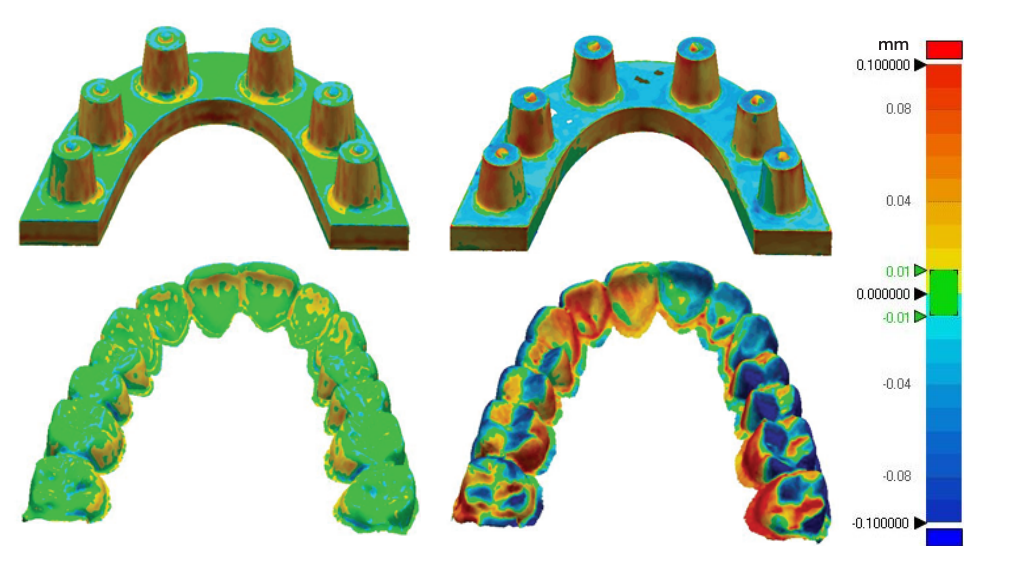In recent decades, the dental industry has changed greatly due to the introduction of digital technologies. CAD/CAM systems have been introduced in a variety of dental offices, dental laboratories, and production centers. 3D scanners are the key part of these systems in the dental industry. They are divided into intraoral and extraoral scanners. A large number of studies have compared and evaluated the accuracy of 3D scanners for dental use. Due to the ambiguous interpretation of accuracy and differences in observed models and used materials, previous studies indicated conflicting and inconclusive results regarding the accuracy of intraoral and extraoral scanners. In addition, these studies have focused on the analysis of a single dental model, although some results suggested the influence of geometry complexity on the accuracy of 3D scanning.
Therefore, this study compared three extraoral and one intraoral scanner on two different models - the model of a simplified edentulous jaw with abutments and the model of the upper jaw with natural teeth. The scanners were compared with a reference scanner Atos Core 135 using 3D analysis based on the ICP algorithm. The conducted analysis is based on values of the maximum, minimum, average of positive deviations, average of negative deviations, RMS, standard deviation, average of absolute deviations and distributions of deviations on the models. Differences in scanner accuracy were found depending on the scanned model. The model of a simplified edentulous jaw with abutments was scanned most accurately with UP300. On the other hand, UP360 was the most accurate when scanning the model of the upper jaw with natural teeth. All scanners were more accurate on the latter model. Extraoral scanners showed better accuracy than intraoral scanners. The UP300 and UP360 scanners met clinical accuracy in the area of whole jaws and the area of natural teeth and abutments. The Dental Wings 3Series scanner met clinical accuracy in the area of whole jaws and natural teeth, but not in the area of abutments. Dental Wings Intraoral Scanner did not meet clinical accuracy in the area of whole arches or the area of teeth and abutments. Also, scanners using structured light technology have proven to be more accurate than laser scanners. Finally, the accuracy results of the scanners are in accordance with the accuracy data provided by the respective manufacturer.

Marija Trpčić
2020
Rector award
Fakultet strojarstva i brodogradnje Sveučilišta u Zagrebu